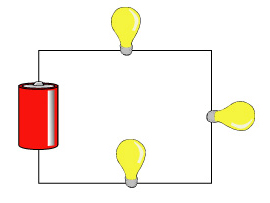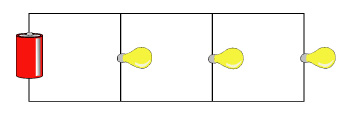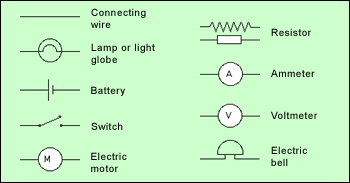Electricity: Moving charges
ENERGY CHANGES IN A SIMPLE ELECTRIC CIRCUIT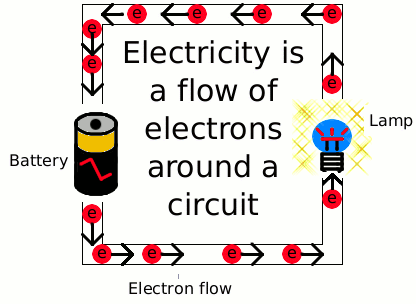
When current flows in a conductor, heat energy is given out at every point in that conductor. This energy comes from the battery (or other source, e.g. a generator) that is driving the current through the conductor.
In a battery, chemical energy is converted into electrical energy. The electric charges get electric potential and kinetic energy as they pass through the battery.
The average kinetic energy of the moving charges remains the same. The lost potential energy is converted into heat as the charges move round the circuit.
As they move around the circuit their average speed and average kinetic energy ( ½*m*v² ) remain constant, but they lose electric potential energy. This lost potential energy appears as heat and light . FIG. above shows this in a simplified way.
POTENTIAL DIFFERENCE BETWEEN TWO POINTS IN A CIRCUIT
The amount of energy lost by one coulomb ( 6.25 * 10 raised to the 18th power or 6.25×10^18 electrons ) in passing between two points of a circuit is called the potential difference (p.d.) between these two points.
So if we call 1Q = 6.25 * 10^18 electrons , we can define the unit of potential difference as:
![]()
What does it mean?
If 6.25 * 10^18 electrons arrive at a bulb terminal and give out 1 Joule of energy in order for the bulb to light up, the electric potential energy of these electrons when they come out of the bulb will be reduced. We have a Volt between the terminals of the bulb. Since potential difference is measured in volts, potential difference is also called voltage.
VOLTAGE IN SERIES AND PARALLEL CIRCUITS
VOLTAGES IN SERIES
The potential difference across two ( or more ) consecutive parts of a series circuit is equal to the sum of the potential  difference across each part.
difference across each part.
V = V1 + V2 + V3 + V4 + …….
In other words
The energy lost by spider-man climbing a 50 floor building is equal to the sum of the energy lost if spider-man run up the stairs from first floor to the second plus the energy from second to the third floor plus ……
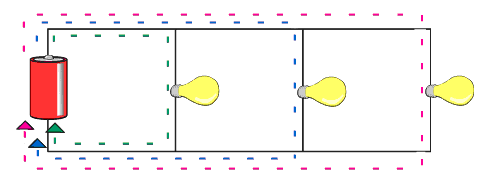 VOLTAGES IN PARALLEL The potential difference across each of a number of conductors connected in parallel with each other is the same.
VOLTAGES IN PARALLEL The potential difference across each of a number of conductors connected in parallel with each other is the same.
V1 = V2 = V3 = V (Battery).
In the case, if the voltage of the battery is 10 Volts, every Bulb support 10 volts between its terminals.
Let see a video about series circuits and parallel circuits in a car.
Examples and Exercises:
1º In the next exercises, batteries have equal values of 5 volts. Which circuit has the brighter globe, a or b? Why? What happens in c and d?
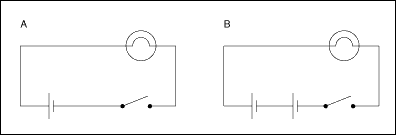
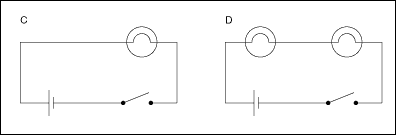
2º In the next circuits, the battery has a value of 6 volts. Calculate how may volts each lamp receives.
